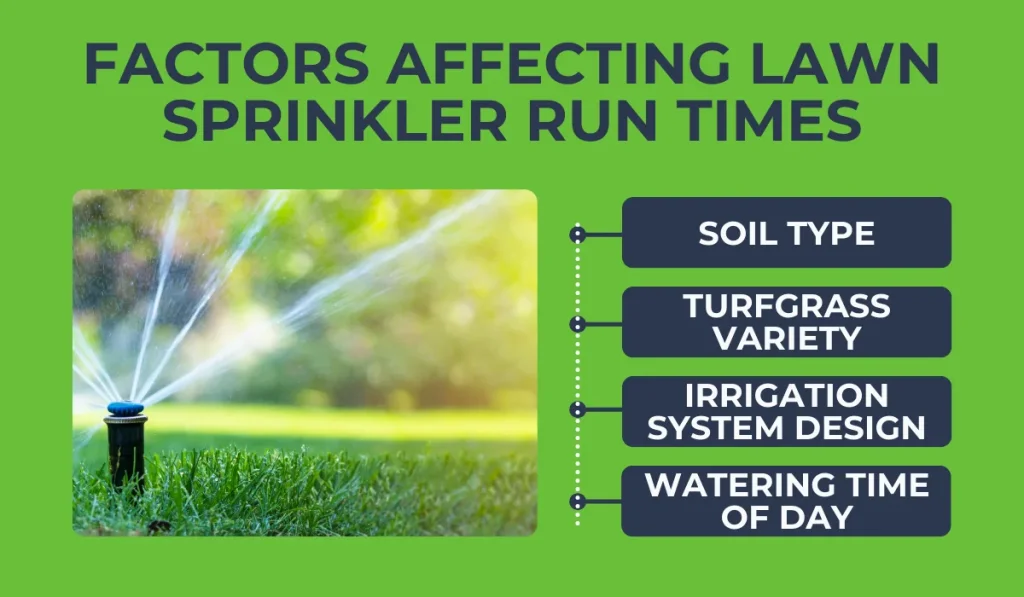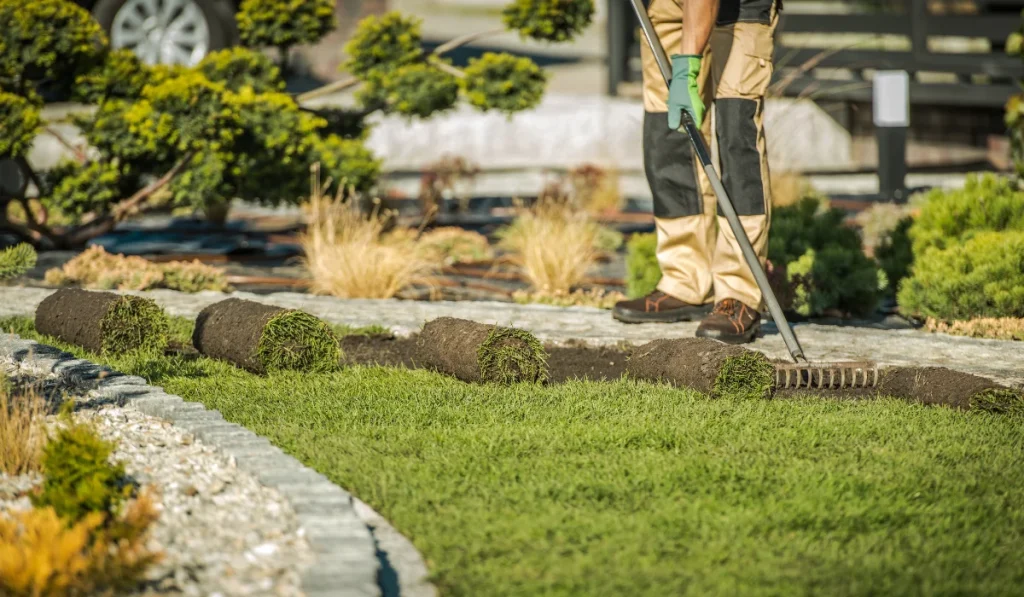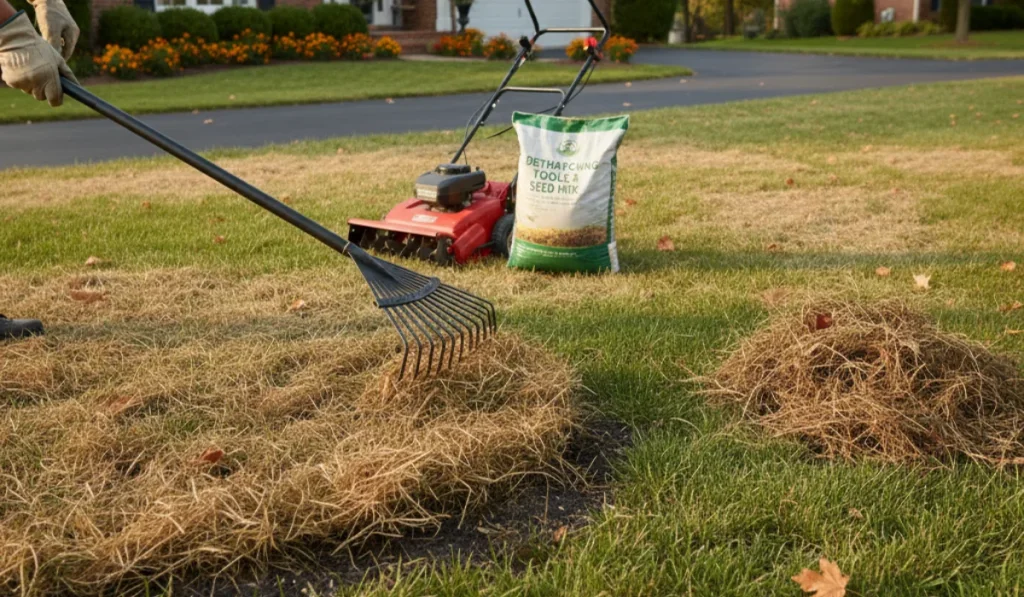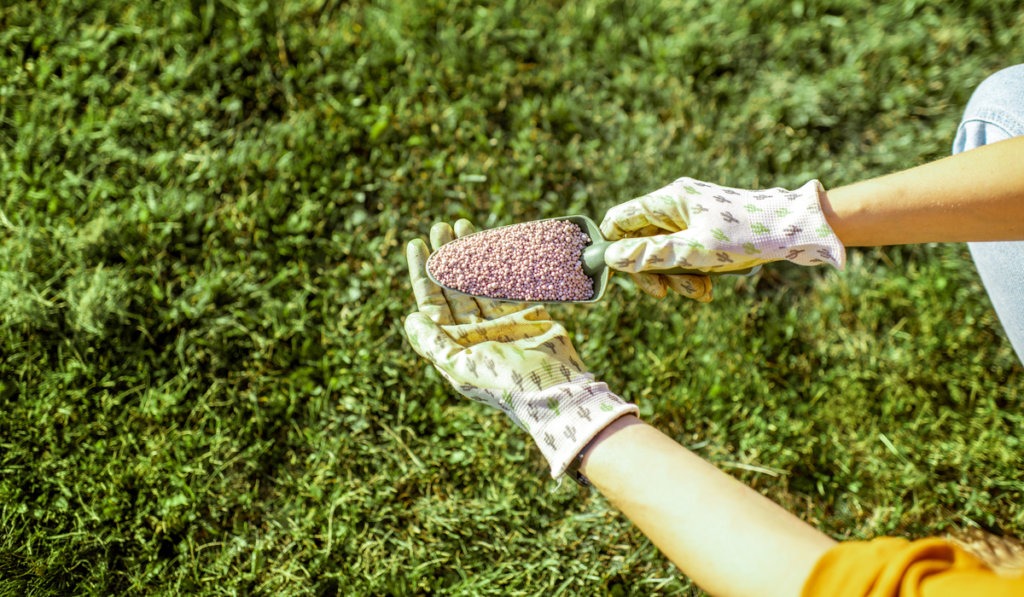Many homeowners wonder, “How long should I leave my sprinklers on?” The answer depends on several factors, including the type of sprinkler system, soil type, and climate conditions.
In this guide, we’ll explain the key factors that affect sprinkler run times and offer tips for setting an effective watering schedule.
Key Takeaways
- Lawns need 1 to 1.5 inches of water weekly to develop deep roots and resist drought stress.
- Soil type, grass variety, and sprinkler type affect how long and often you should water your lawn.
- Morning watering prevents evaporation and fungal growth while avoiding problems like oversaturation and runoff from evening watering.
- Smart irrigation tools and drought-resistant grasses help you save water without sacrificing a healthy, green lawn.
How Long Should Sprinklers Run?
To provide your lawn with the 1 to 1.5 inches of water it needs each week, most sprinkler systems need to run for 20 to 30 minutes per zone, 2 to 3 times per week.
However, the exact amount of time your sprinkler system runs will depend on the type of nozzle. High-flow nozzles may require 15 minute sessions, while low-flow nozzles may require around 45 minutes of watering.
This right amount of water helps establish deep root systems, which are critical for resisting drought stress and preventing fungal growth.
Factors Affecting Lawn Sprinkler Run Times

How much water your lawn needs depends on several key conditions. Here are the most important factors when deciding how long to run your sprinklers to keep your lawn thriving.
1. Soil Type
Soil type plays a big role in how much water your lawn needs:
- Sandy soil: Drains quickly, requiring shorter, more frequent watering sessions to keep moisture available for the grassroots.
- Clay soil: Holds water longer, so less frequent watering is needed. However, too much water at once can lead to oversaturation and runoff.
For sloped or clay-heavy areas, a cycle and soak method—shorter watering cycles with breaks in between—can help water absorb more effectively.
2. Turfgrass Variety
Different grass types have unique water needs.
Once established, drought-resistant varieties like TifTuf Bermuda require less water, making them ideal for areas prone to evaporation or water restrictions.
Meanwhile, bluegrass and similar cool-season grasses are more sensitive to drought stress and may need extra care during dry periods.
3. Irrigation System Design
Your sprinkler type plays a key role in how long you should water. For instance:
- Rotor heads: These rotate to spray water slowly over an area, requiring a longer length of time (typically 30–60 minutes per sprinkler zone).
- Spray heads: These deliver water more quickly and evenly, so they usually only need 10–20 minutes per sprinkler zone.
- Drip irrigation: Often used for flower beds or shrubs, these systems deliver water directly to the soil and may require different timing altogether.
Regularly check your sprinkler system for uniform coverage, and fix any clogged or misaligned sprinkler heads or nozzles to prevent overwatering in some areas and dry patches in others.
4. Watering Time of Day
When you water your lawn can be as important as how much water you provide.
Watering in the early morning is ideal because the cooler temperatures allow water to soak into the soil before the heat of the day increases evaporation. This is especially important for sandy soil, which loses moisture more quickly.
Evening watering, by contrast, can leave your grass damp overnight, creating conditions ideal for lawn diseases. For clay soils, this can lead to even more problems, as excess moisture is already slow to drain.
How to Avoid Overwatering & Underwatering
Overwatering
Overwatering leads to shallow roots and wasted water. Signs include standing water, runoff, or a lawn that feels spongy underfoot. It is especially problematic in clay soils, as they retain water for longer and can quickly become oversaturated.
Underwatering
If your lawn isn’t getting enough water, you might notice brown patches, slow recovery from foot traffic, or signs of drought stress like curling grass blades. One of the first indicators of underwatering is the lawn turning a greyish color before growing brown.
How to Save Water While Maintaining a Healthy Lawn
To keep a healthy lawn while conserving water, consider these tips:
- Monitor rainfall: Use a soil moisture or rain sensor to measure natural precipitation and adjust your watering schedule accordingly.
- Optimize system efficiency: Upgrade to smart irrigation controllers that adjust run times based on weather conditions. This is especially helpful in regions with water restrictions.
- Choose resilient grasses: Drought-tolerant varieties like TifTuf Bermuda require less water and can save you both time and money.
Take the time to fine-tune your watering schedule and invest in efficient irrigation tools to save money and maintain a lush lawn year-round.
If you’re unsure where to start or need professional advice, a lawn care service can help you optimize your watering schedule for the best results.
Frequently Asked Questions
How can I tell if my sprinklers are covering the entire lawn evenly?
Uneven coverage often shows up as dry or overly wet spots in your lawn. To check, run your sprinklers and observe the water distribution. You can also use shallow containers, like small cups, to confirm water is being applied consistently across all areas.
Do watering needs change if sod is freshly planted?
Yes, newly planted lawns need more frequent watering to establish strong root systems. Water lightly 1–2 times daily for the first few weeks, then gradually space out sessions as the roots grow deeper. Adjust based on your soil type and grass variety.
Is it okay to water my lawn during a light rain?
Light rain doesn’t always provide enough water for your lawn. If rainfall is less than 0.25 inches, you may still need to run your sprinklers to meet your lawn’s weekly water requirement of 1 to 1.5 inches. Use a rain gauge to help decide.



